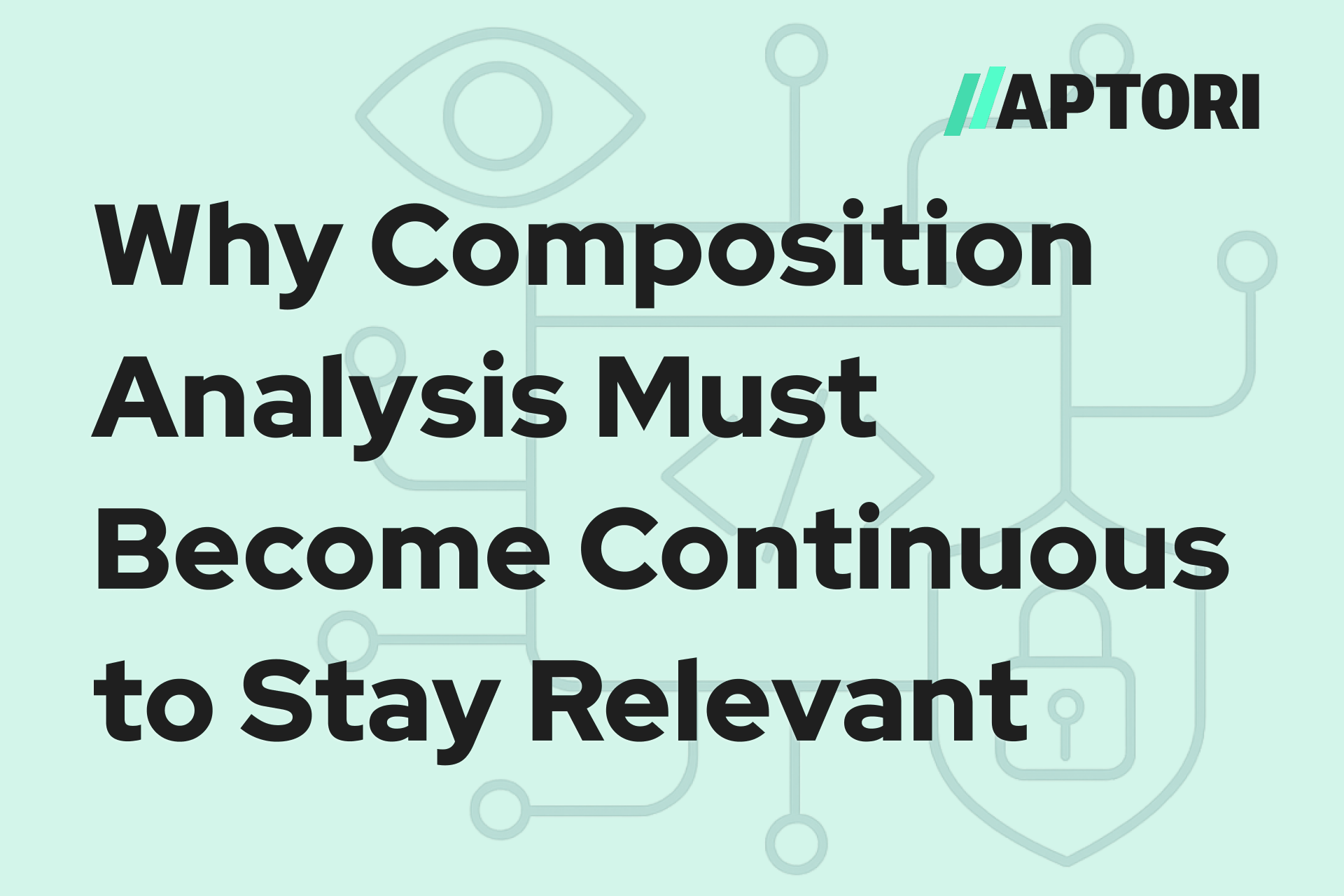The Limits of Traditional Composition Analysis
Composition analysis was created for a slower world. It came from a time when software moved in releases, not streams, and the main objective was to show auditors that you knew what was inside your code. A scan would inventory open source and third-party components, produce a report, and that report would live on as evidence of diligence. For a moment in time, that model worked.
Then the ground shifted.
A Snapshot in a Living System
Modern software never sits still. Dependencies update constantly. Transitive packages appear and disappear without anyone touching a line of code. Vulnerabilities are assigned long after something ships. And attackers no longer wait for development cycles — they track package ecosystems with the same intensity defenders track zero-days.
A static SBOM or SCA report can only answer a dated question: what did we believe we were using when we scanned? It does not answer the only question that matters today: is what we are currently using vulnerable right now?
Once the scan is complete, nothing wakes back up to reassess the risk. A new CVE doesn’t trigger anything. A malicious version doesn’t register. Teams continue to operate under the illusion that clean means safe, when in reality, the snapshot has already expired.
That is not a process failure. It is a design failure.
From Inventory to Continuous Awareness
For composition analysis to stay relevant, it has to evolve from documentation to detection. The goal is no longer to prove that you knew what went into your software — it is to understand when something you are already using becomes exploitable.
That requires a mindset shift. An SBOM cannot be treated as a sealed artifact. It must behave like a monitored asset. When a new vulnerability emerges, the system should already know what is affected, where it is deployed, and whether the vulnerable functionality is even reachable.
Without that, remediation becomes either blind panic or delayed cleanup. Neither is acceptable.
Why Static SCA Cannot Keep Pace
The problem is not a lack of tooling. It is the absence of context and continuity.
Vulnerability disclosures happen daily. Exploitability depends on code paths, not version strings. Transitive dependencies don’t announce themselves. Development doesn’t pause just because a scan was completed last quarter. Static SCA collects ingredients and then retires, leaving you with a frozen picture of something that has already changed.
It was never built to track risk in motion.
SMART-SCA: Turning SBOMs Into Living Intelligence
Aptori is addressing this gap with SMART-SCA — an evolution of composition analysis built for a world where risk does not wait for a rescan.
SMART-SCA does not treat the SBOM as the end of the process. It treats it as the beginning of continuous observation. When a new CVE is published, it automatically correlates that vulnerability with the exact packages in use, understands whether the affected code can be executed, and surfaces that exposure without requiring a rebuild, a manual trigger, or a compliance cycle.
There is no noise. There is no waiting. There is no rediscovery of the same dependency ten times in ten different reports. Instead, there is clarity: something you use became dangerous, and here is the context to act on it.
That is the shift — from passive reporting to active risk intelligence.
The Call to Act Before the Next Disclosure
Every organization already has dependencies in production that will receive new vulnerabilities in the coming days and weeks. The question is not whether a scan passed. The question is whether you will know when something becomes vulnerable after the fact.
The companies that move now will not be surprised later. They will not scramble to explain why a CVE sat unnoticed for 60 days. They will not rely on expired assurances.
Aptori built SMART-SCA for that exact reason. If you are relying on static reports to protect dynamic systems, you are trusting yesterday’s visibility to stop tomorrow’s breach.
It is time to replace the snapshot with a living source of truth.
Take control of your Application & API security with contextual testing, risk assessment, and continuous vulnerability management
See how Aptori’s award winning AI-driven security platform performs business logic testing to uncover hidden API threats, prioritizes risks, and automates remediation—request your personalized demo today and transform your security into a proactive advantage.















